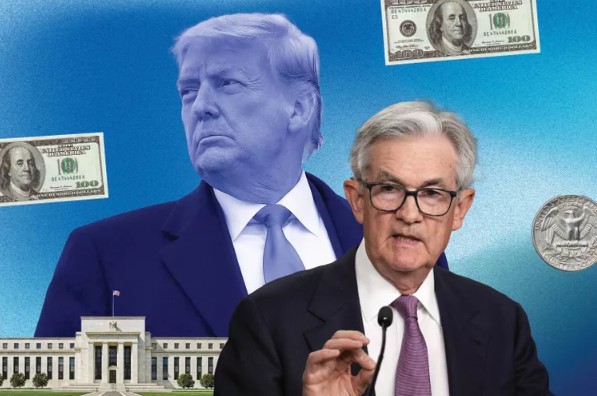Building on last year’s mega-cap momentum, the stock market rallied higher in the first three months of 2024, with quarterly gains for the Dow Jones Industrial Average, S&P 500, and NASDAQ Composite at 5.6%, 10.2% and 9.1% respectively. Interestingly, this is the fourth time in the last 25 years and only the seventeenth time in the last 75 years where the S&P 500 has gained more than 8% during the first quarter. Impressively, especially for those with a bullish posture, the S&P 500 lost ground over the rest of the year in only one out of the previous 16 times with an average gain of 9.7% for the final three quarters of the year.
While the pace of disinflation has decelerated, the trend is undeniable and continues to slowly work its way to-ward the Federal Reserve’s 2% inflation target. The Fed’s preferred inflation gauge or core personal consumption expenditures price index (core PCE) was up 0.3% in February from one month ago and 2.8% on an annualized basis. This compares to 2.9% annualized in January and 3.2% in November of last year. Core PCE hasn’t been below the Fed’s target in three years and the so-called “last mile” to get back to 2% may be glacially slow.
While inflation remains somewhat stubborn, it must also be noted that economic resilience remains equally stubborn. Consumer spending rose 0.8% in February, well ahead of expectations for an increase of 0.5%, and the United States added 275,000 jobs in February and an additional 303,000 jobs in March. Meanwhile, unemployment has only inched high-er to 3.8% from last April’s 3.5% low, and GDP is expected to advance by 2.1% this year, only slightly below last year’s 2.3% pace. The supertanker U.S. economy continues to grind higher, surprising many skeptics who had widely forecast imminent recession in the wake of the Fed’s rate hike barrage. With the Fed having kept rates steady since last July, good economic news is no longer feared, translating to revived corporate earnings and higher stock prices.
The 25% gain in the S&P 500 since last November has boosted overall market capitalization by almost $11 trillion, fueling a boom in the wealth effect, and leaving consumers more confident. With consumer spending representing 68% of overall GDP, buoyant prices for stocks and real estate bode well for the economy in the months ahead.
When the year began, the consensus called for as many as six 25-basis-point cuts in the Fed Funds rate to commence in March. Now, only three months later, the consensus closely matches the Fed’s own recently tele-graphed expectations for only three 25-basis-point cuts in 2024. With the economy stable, many analysts are weighing the possibility that the Fed does not cut rates at all this year. Especially with the Presidential elec-tion looming and the Fed’s preference to remain above the political fray, a June rate cut becomes more likely if the Fed follows through on its recent rhetoric.
The Fed is in an enviable position. The economy remains strong, yet not so hot that inflation is at risk of reaccelerating. If demand remains steady and inflation stickier, the Fed can wait longer before cutting rates. If the economy suddenly worsens and un-employment ticks higher than anticipated, the Fed has ample firepower to help engineer a soft landing by rapidly cutting rates. In previous times before the Fed Funds rate was repressed to zero, we might have been tempted to call this a Goldilocks set of economic circumstances. Only a matter of timing, it is all but certain that the Fed’s next move will be a cut. Whether we see three cuts this year remains to be seen.
Indeed, the best news may be that interest rate normalization has not ravaged the U.S. economy. Even with the precipitous decline in money supply which many suggest is a harbinger for recession and deflation, higher interest rates seem to have had little impact on the average consumer, who collectively took advantage of the previous era’s historically low interest rates to refinance. In fact, higher interest rates have been a boom for retirees and savers who now earn a tidy sum on the collective $6 trillion invested in money market funds. The flood of post-pandemic liquidity has abated, sup-ply chains have normalized, productivity is rising, and the Fed can continue to be patient.
Meanwhile, all this good economic news has not been lost on the equity markets, leaving the major indices vulnerable to price correction. The S&P 500 now trades at just under 21x forward earnings estimates for the next 12 months and looks stretched at levels approximately 12% above its 200-day moving aver-age. Momentum stocks are even more unanchored from fair value and seemingly ripe for mean reversion. For example, the Goldman Sachs Long/Short High Beta Momen-tum Index now trades approximately 30% above its 200-day moving aver-age, a level only exceeded twice in the last 15 years, with both of those occasions ushering in 20%+ corrections. According to Bank of America, active funds now have 56% less exposure to value than momentum investments, which is a 15-year low and seems to offer a wonderful contrarian opportunity.
We continue to believe that the momentum trade will fade soon enough and our confidence in the long-term benefits of owning high-quality, best -of-breed businesses that consistent-ly grow earnings and increase dividends will be validated. Further, we fully expect the benefits of an equally weighted strategy to normalize once AI-fueled momentum cools. In a market trading towards the higher end of historic ranges, the equally weighted S&P 500 trades at a very reasonable forward PE of 15. As earnings growth for the average stock plays catch-up over the coming quarters relative to mega-caps, we expect our discipline to shine.
The opinions expressed herein are the sole views of Vantage Wealth. Supporting data and factual information used throughout is deemed to have been obtained from reliable sources.




